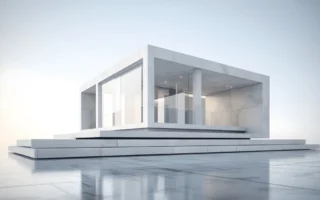Introduction:
Soviet architecture, characterized by its imposing concrete structures and utilitarian designs, often evokes a sense of melancholy and somberness. But what lies behind this perception? Why is Soviet architecture so frequently associated with feelings of depression and gloom? This exploration delves into the historical, political, and socio-cultural factors that have shaped the aesthetic and emotional landscape of Soviet architectural legacy.
I. The Legacy of Soviet Urban Planning:
A Brief Historical Overview A. The Ideological Foundations of Soviet Architecture B. Stalinist Architecture: Monumentalism and Control C. Post-Stalinist Period: The Legacy of Brutalism and Mass Housing
II. Monumentalism vs. Human Scale:
The Dilemma of Soviet Architectural Ideals A. Imposing Structures: Symbolism of Power and Control B. Alienation and Isolation: Impact on Human Experience C. Contrast with Western Architectural Philosophy
III. Concrete Utopia or Dystopia?
The Aesthetic of Soviet Architecture A. Utilitarianism and Functionalism: Prioritizing Efficiency over Aesthetics B. Monotony and Repetition: The Uniformity of Soviet Urban Landscapes C. The Absence of Individual Expression: Collective Identity vs. Personal Freedom
IV. Urban Decay and Neglect:
The Post-Soviet Architectural Crisis A. Economic Turmoil and Infrastructure Decline B. Preservation Challenges and Demolition Debates C. Nostalgia vs. Progress: The Struggle to Define Soviet Architectural Heritage
V. Psychological Impact:
Understanding the Emotional Response to Soviet Architecture A. Collective Trauma and Cultural Memory B. Psychological Effects of Authoritarian Urban Planning C. The Subversion of Joy: Depressive Undertones in Built Environment
VI. Reimagining Soviet Spaces:
Contemporary Interpretations and Revitalization Efforts A. Adaptive Reuse and Creative Transformation B. Artistic Interventions: Injecting Life into Abandoned Spaces C. Rethinking Soviet Architecture in the Context of Modern Urbanism
VII. Lessons from the Past:
Exploring the Intersection of Politics and Architecture A. The Role of Ideology in Shaping Built Environment B. Balancing Social Needs with Architectural Expression C. Learning from Soviet Mistakes: Towards a More Human-Centered Design Approach
VIII. Rediscovering Beauty in the Bleakness:
Finding Redemption in Soviet Architectural Heritage A. Appreciating the Aesthetic of Brutalism and Monumentalism B. Celebrating Architectural Resilience Amidst Adversity C. Embracing Complexity and Contradiction: The Richness of Soviet Architectural Legacy
Conclusion:
The enigma of Soviet architecture’s perceived depression stems from a complex interplay of historical, political, and psychological factors. While its imposing structures and utilitarian designs may evoke feelings of gloom, they also serve as poignant reminders of a bygone era marked by struggle and resilience. By understanding the nuances of Soviet architectural legacy, we gain insight into the human experience and the enduring power of built environments to shape our emotions and perceptions.




